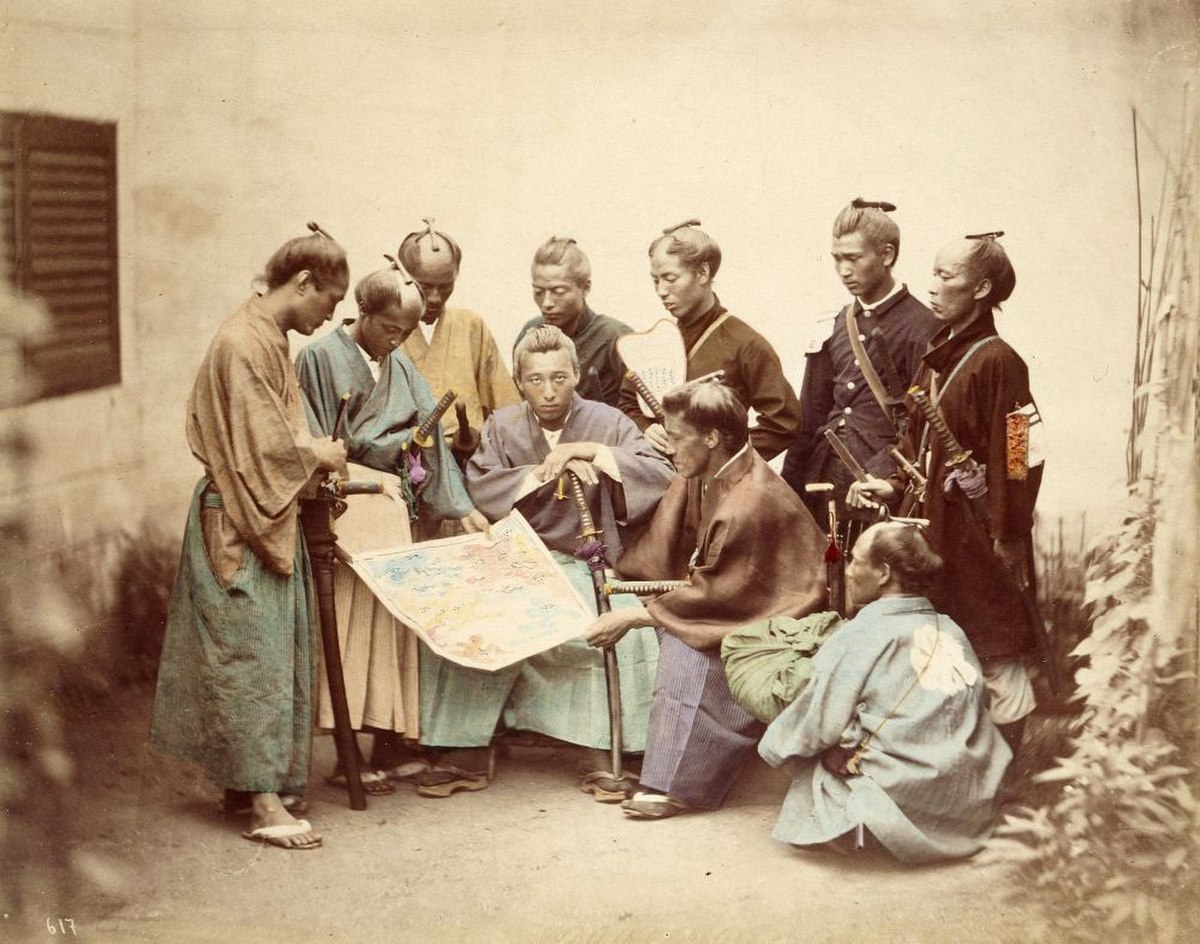
Decline: Bakumatsu period
JapanBy the late eighteenth and early nineteenth centuries, the shogunate showed signs of weakening. The dramatic growth of agriculture that had characterized the early Edo period had ended, and the government handled the devastating Tenpō famines poorly. Peasant unrest grew and government revenues fell. The shogunate cut the pay of the already financially distressed samurai, many of whom worked side jobs to make a living. Discontented samurai were soon to play a major role in engineering the downfall of the Tokugawa shogunate.
The arrival in 1853 of a fleet of American ships commanded by Commodore Matthew C. Perry threw Japan into turmoil. The US government aimed to end Japan's isolationist policies. The shogunate had no defense against Perry's gunboats and had to agree to his demands that American ships be permitted to acquire provisions and trade at Japanese ports. The Western powers imposed what became known as "unequal treaties" on Japan which stipulated that Japan must allow citizens of these countries to visit or reside on Japanese territory and must not levy tariffs on their imports or try them in Japanese courts.
The shogunate's failure to oppose the Western powers angered many Japanese, particularly those of the southern domains of Chōshū and Satsuma. Many samurai there, inspired by the nationalist doctrines of the kokugaku school, adopted the slogan of sonnō jōi ("revere the emperor, expel the barbarians"). The two domains went on to form an alliance. In August 1866, soon after becoming shogun, Tokugawa Yoshinobu, struggled to maintain power as civil unrest continued. The Chōshū and Satsuma domains in 1868 convinced the young Emperor Meiji and his advisors to issue a rescript calling for an end to the Tokugawa shogunate. The armies of Chōshū and Satsuma soon marched on Edo and the ensuing Boshin War led to the fall of the shogunate.
Bakumatsu was the final years of the Edo period when the Tokugawa shogunate ended. The major ideological-political divide during this period was between the pro-imperial nationalists called ishin shishi and the shogunate forces, which included the elite shinsengumi swordsmen. The turning point of the Bakumatsu was during the Boshin War and the Battle of Toba–Fushimi when pro-shogunate forces were defeated.
